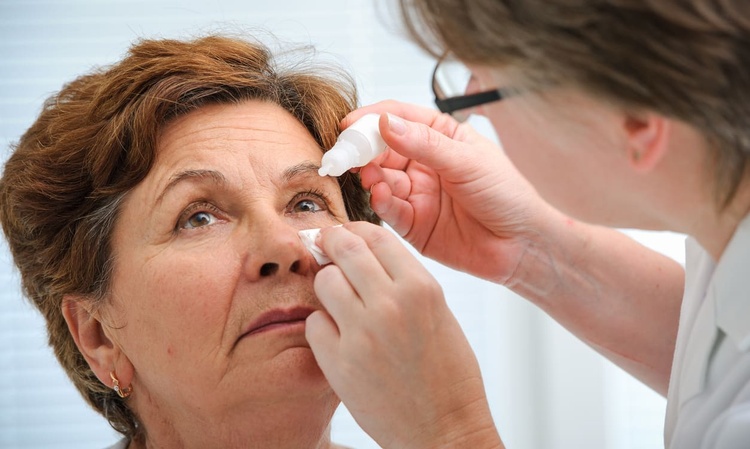Understanding Dry Eye Treatment and Management Options
Dry eye syndrome affects millions of people worldwide, causing discomfort and potentially impacting vision quality. This condition occurs when your eyes don't produce enough tears or when tears evaporate too quickly. Understanding the causes, recognizing the symptoms, and exploring effective treatment strategies can help you manage this common eye condition and maintain optimal eye health.

Dry eye syndrome is more than just occasional eye irritation—it’s a chronic condition that can significantly affect your daily comfort and visual function. Whether you experience mild discomfort or severe symptoms, understanding the underlying causes and available treatment options is essential for effective management. Modern approaches to dry eye treatment range from simple lifestyle modifications to advanced medical interventions, offering hope for those seeking relief.
What Causes Dry Eyes?
Dry eyes develop when the tear film that protects and lubricates your eyes becomes unstable. Several factors contribute to this condition. Age plays a significant role, as tear production naturally decreases over time, particularly after age 50. Hormonal changes, especially in women during pregnancy, menopause, or while using birth control, can affect tear production. Environmental factors such as wind, smoke, dry air, and air conditioning accelerate tear evaporation. Extended screen time reduces your blink rate, leading to increased tear evaporation. Certain medications, including antihistamines, decongestants, blood pressure medications, and antidepressants, can decrease tear production. Medical conditions like diabetes, rheumatoid arthritis, thyroid disorders, and autoimmune diseases are also associated with dry eye syndrome. Additionally, previous eye surgery, including LASIK, can temporarily or permanently affect tear production.
Recognizing Dry Eyes: Important Signs to Watch
Identifying dry eye symptoms early allows for prompt treatment and prevents complications. Common signs include a stinging, burning, or scratchy sensation in your eyes. Many people experience a gritty feeling, as if something is in their eye. Paradoxically, excessive tearing can occur as your eyes attempt to compensate for dryness. You might notice stringy mucus in or around your eyes, particularly upon waking. Red, irritated eyes are a frequent complaint, along with sensitivity to light and difficulty wearing contact lenses comfortably. Blurred vision or eye fatigue, especially after reading or using digital devices, can indicate dry eyes. If you experience persistent symptoms lasting more than a few days, or if symptoms worsen despite over-the-counter treatments, consulting an eye care professional is advisable. Severe symptoms like significant pain, sudden vision changes, or eye discharge warrant immediate medical attention.
How Dry Eyes Impact Your Eye Health
Untreated dry eye syndrome can lead to more serious complications beyond discomfort. The tear film serves multiple critical functions: it provides lubrication, delivers oxygen and nutrients to the cornea, washes away debris and foreign particles, and protects against infection. When this protective layer is compromised, several problems can arise. Increased eye infections become more likely as tears contain antimicrobial components that help fight bacteria. Damage to the eye surface can occur, including inflammation and abrasion of the cornea. In severe cases, corneal ulcers may develop, potentially leading to scarring. Vision quality can deteriorate, affecting your ability to perform daily activities like reading, driving, or working on computers. Chronic inflammation can create a cycle where dry eyes cause inflammation, which in turn worsens dryness. The constant discomfort significantly impacts quality of life, affecting work productivity, recreational activities, and overall well-being. Early intervention and consistent management help prevent these complications and preserve long-term eye health.
Effective Dry Eyes Management Strategies
Managing dry eye syndrome typically involves a multi-faceted approach tailored to the severity and underlying cause of your condition. Artificial tears and lubricating eye drops provide immediate relief by supplementing natural tear production. These are available over-the-counter in various formulations, including preservative-free options for frequent use. Prescription medications like cyclosporine or lifitegrast reduce inflammation and increase tear production. Punctal plugs, tiny devices inserted into tear ducts, prevent tears from draining too quickly, keeping eyes moist longer. Intense pulsed light therapy and meibomian gland expression treat dysfunction in the oil-producing glands of the eyelids. Lifestyle modifications prove highly effective: taking regular breaks during screen time using the 20-20-20 rule (every 20 minutes, look at something 20 feet away for 20 seconds), using a humidifier to add moisture to indoor air, wearing wraparound sunglasses outdoors to protect against wind and sun, staying hydrated by drinking adequate water, and maintaining eyelid hygiene through warm compresses and gentle cleaning. Omega-3 fatty acid supplements may improve tear quality. In severe cases, specialized treatments like scleral contact lenses, autologous serum eye drops made from your own blood, or surgical procedures to close tear ducts permanently may be recommended. Working closely with an eye care professional ensures you receive the most appropriate treatment for your specific situation.
This article is for informational purposes only and should not be considered medical advice. Please consult a qualified healthcare professional for personalized guidance and treatment.
Maintaining Long-Term Eye Comfort
Successful dry eye management requires consistency and patience. Most treatments take several weeks to show full effects, so persistence is important. Regular follow-up appointments with your eye care provider help monitor progress and adjust treatment plans as needed. Keeping a symptom diary can identify triggers and patterns, enabling you to make informed lifestyle adjustments. Remember that dry eye syndrome is often a chronic condition requiring ongoing management rather than a one-time cure. By combining appropriate medical treatments with lifestyle modifications and environmental adjustments, most people with dry eyes can achieve significant symptom relief and maintain healthy, comfortable vision for years to come.




